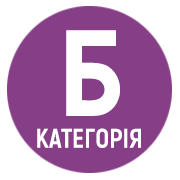OPERA AESTHETICS OF F. BUSONI: SEARCH FOR YOUR OWN MODEL OF ARTISTIC SYNTHESIS
DOI:
https://doi.org/10.32782/facs-2024-4-2Keywords:
F. Busoni, opera, musical and aesthetic concept, double coding, parallel projection.Abstract
The abstract. The article reviews the search for a new model of artistic synthesis in the operas of one of the brightest representatives of the European musical theatre of the late XIX - early XX century Ferruccio Busoni in the process of forming his musical and aesthetic concept. The research methodology is based on the analysis of the context of the artist's work, the historical conditions of the musical art of this period, the hermeneutic method, structural and semantic analysis of the text. The scientific novelty consists in the study of F. Busoni's operas in the context of the implementation in his texts of his aesthetic instructions of such techniques as double coding, parallel projection, quotation, irony, parody, etc. Conclusions. The operas of the composer, pianist, conductor, music teacher, librettist and essayist Ferruccio Busoni are of great importance for the musical art of the 20th century. His aesthetic views and creativity influenced the formation of neoclassicism, which is characterized by a combination of classical norms of form formation with the latest means of musical language. In his performance and piano work, F. Busoni became one of the closest predecessors of neoclassicism. The article states that F. Busoni's reflections on the ideal model of opera are recorded in his theoretical works such as «Sketch of the New Aesthetics of Musical Art», «The Essence and Unity of Music» and embodied in his works in such operas as «The Bride's Choice», «Harlequin, or Windows», «Turandot, a Chinese fairy tale» and in the unfinished mystery opera «Doctor Faust». It is emphasized that the images of the main characters of his operas can be considered examples of the metaphorical embodiment of the composer's ideas, and their plot development reveals features of two layers – the simultaneous existence of an obvious and publicly accessible code, as well as a hidden intellectual plan. It is understood that the model of the ideal opera by F. Busoni includes a number of theses, among which the most significant is a special attitude to the role and significance of the theater, therefore the plot of the opera must have a deep meaning and a high morality; the plot of the opera must be unusual, with a sacred meaning that can elevate society above the mundaneness of life; the number structure of the old Italian opera is a model of the right balance of spectacle, poetry and music. The composer's aesthetic ideal is «Musical Divine Comedy», in which music receives a new space for its own development, entering into interaction with other types of art in such a complex synthetic genre as opera.
References
Busoni, F. Arlecchino: Ein theatralisches Capriccio in einem Aufzuge. Words and Music by Ferruccio Busoni; Piano Arrangement with Text by Philipp Jarnach. Leipzig: Breitkopf & Hartel, 1917.
Busoni, F. Doktor Faust: Dichtung und Musik von Ferruccio Busoni, ergänzt und herausgegeben von Philipp Jarnach. Piano Arrangement with Text by Egon Petri and Michael von Zadora. Leipzig: Breitkopf & Härtel, 1926.
Busoni, F. Turandot [Music]: Eine chinesische Fabel nach Gozzi in 2 Akten. Words and Music by Ferruccio Busoni; Piano Arrangement with Text by Philipp Jarnach. Wiesbaden: Breitkopf & Härtel, 1918.
Busoni, F. Von der Einheit der Musik, von Dritteltonen und junger Klassizität, von Bühnen, und Bauten, und anschliessenden Bezirken. Verstreute Aufzeichnungen. Berlin: Max Hesses, 1922.
Golan, G. Arnold Schoenberg and the Ideology of Progress in Twentieth-Century Musical Thinking. Journal for New Music and Culture, 5(Summer). Retrieved from http://www.searchnewmusic.org/gur.pdf (accessed December 28, 2019).
Münz, R. Theatralität und Theater. Zur Historiographie von Theatralitätsgefügen. Berlin, 1998. 308 p.
Грищенко, А. Ферруччо Бузоні та його редакція «Добре темперованого клавіру»: творчі пошуки музиканта та їх втілення в збірці Й. С. Баха. Міжнародний вісник: культурологія, філологія, музикознавство. 2015. № 5. С. 199–205.
Гульцова, Д. Роль типології етюду в мистецтві та інтелектуальній діяльності. Вісник Національної академії керівних кадрів культури і мистецтв: наук. журнал. 2020. № 3. С. 200–207.
Лі Дзінь. Китайські культурні традиції у європейській професійній музичній культурі ХХ століття. Студії мистецтвознавчі. 2011. № 3. С. 67–73.
Цзен Тао. Образ Китаю в європейському музичному мистецтві: жанрово-стильові аспекти : дис. на здоб. наук. ступеня канд. мистецтвознавства : 17.00.03. – Музичне мистецтво / Міністерство культури України. ЛНМА імені М. В. Лисенка. Львів, 2016. 250 с.







